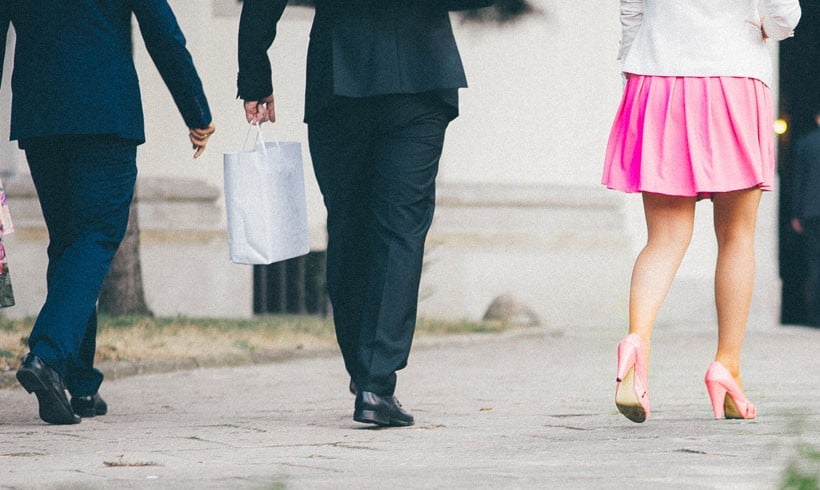At a party recently I observed after a few hours of standing that several women were walking around barefooted or holding on to their high heels complaining of foot pain.
As the sole (no pun intended) Physiotherapist at the party I was immediately consulted for diagnosis, immediate relief and cure!
It became clear that not only the women were leg weary. Several men quietly confided in feeling heel pain and calf tightness with long periods of standing as well.
Our feet are complicated. 26 bones connected by a complex system of 33 joints, 107 ligaments. Powered by 19 muscles and tendons that are strong enough to be a platform to launch ourselves into jumping and hopping. Yet supple and flexible enough to walk over cobblestones.
Like many mechanisms the more complicated the more things that can go wrong and foot pain comes in many forms.
The most common include;
- is an inflammation of the soft tissue (fascia) that connects along the bottom of the foot from the heel bone (calcaneus) to the ball of the foot (line of bones of the toes).
- The Plantar Fascia works like a drawstring to pull the bones together to allow the foot to spring off the ground but then relaxes to allow the foot to contour to the ground.
- Pain is felt under the foot, worse with weight bearing especially in the morning.
- The underside of the foot feels tight, full and swollen.
- Causes of Plantar Fascia include repetitive or prolonged weight bearing stress, being overweight or pregnant. It occurs with mid – older aged people because the muscles supporting the arch of your foot become weaker.
- People with flat feet or high arches are also susceptible.
2. Heel Spur Pain
- is an increase or abnormal bone growth under the heel which causes a protrusion which can often be felt under the heel. The Heel Spur can become inflamed itself or is commonly associated with Plantar Fasciitis.
- The process of bone growth occurs over a long period of time and occurs in connection with repetitive stressing of muscle ligament and fascia attachments.
- Heel Spur pain occurs with excessive jumping and running, poor walking patterns, poor fitting shoes with poor arch support, being overweight and long periods of time standing.
- Pain is felt like a pin sticking into the underside of the heel.
3. Metatarsalgia
- is pain and inflammation along the line of toe bones (metatarsals) also known as the ball of the foot.
- These bones absorb weight and shock at the front of the foot.
- Metatarsalgia usually occurs as a result of a change in posture on the front of the foot such as wearing narrow high heels.
- Diabetes, age, arthritis, repetitive and prolonged stress also enhance this problem
- Pain is felt in the ball of the foot under the toes when weight bearing.
4. Bunions –
- are a deformity of the big toe base whereby the big toe turns in and a bony protuberance appears on the inside of the big toe.
- Bunions occur over time and is actually a misalignment of the Metatarsal Joint of the big toe.
- It can occur due to genetics or poor biomechanics (such as flat feet or having one leg longer than the other).
- Shoe wear does not necessarily cause bunions but narrow, pointy high heel shoes will definitely aggravate pain.
- The base of the big toe becomes red, swollen and painful and over time will stiffen the big toe.
5. Morton’s Neuroma
- is an abnormal growth of nerve tissue occurring most commonly between the 3rd and 4th toes.
- Compression of the foot at the base of the toes is the most common cause although has often been associated with bunions, flat feet or hypermobile toes.
- Morton Neuroma causes numbness pain and burning at the front of the foot and toes.
- It feels as though there is something inside the shoe deep to the ball of the foot.
6. Achilles Tendonitis / Tendinopathy
- The Achilles is the tendon of the calf that attaches to the back of the heel.
- Inflammation of the Achilles tendon causes localised pain, swelling and thickness with associated weakening of the calf and often but not always shortening of the calf.
- Achilles Tendonitis occurs after trauma such as a strain of the calf but usually over time with repetitive stress causing micro tears.
- Previous ankle sprain, tight calf muscles, poor biomechanics of the foot such as flat feet or high arch, being male, poor foot wear, increasing/changing activity levels such as starting to run hills or longer runs without proper conditioning are more likely to cause Achilles Tendinopathies.
As the group of revellers thinned with the diagnostic explanations of their foot pain they became more enthusiastic with what to do and how to treat. Stay tuned for the next installment. Call on 9670 3996 for assistance and further clarification.


